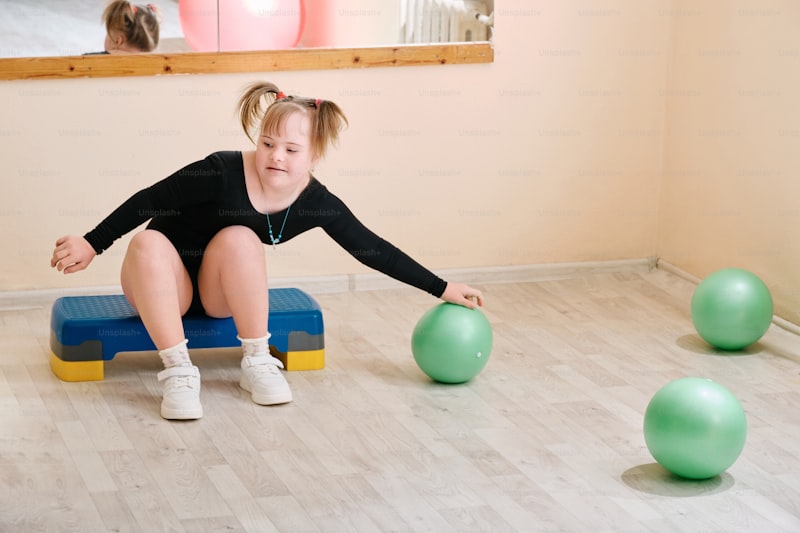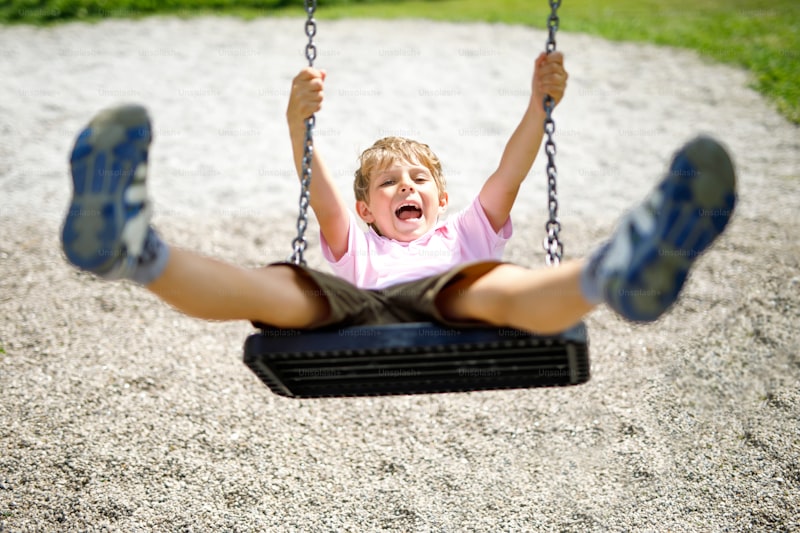Want to spark a love for movement in your child’s life? Promoting physical activity isn’t just about exercise—it’s about nurturing a healthy lifestyle right from the start. Engaging kids in activities that get them moving not only boosts their physical health but also enhances their mental and emotional well-being.
Why is physical activity so crucial? Picture it like planting seeds in a garden. Just as plants need sunlight and water to grow, children need regular exercise to thrive. It helps build strong muscles and bones, improves coordination, and supports a healthy heart. Beyond the physical benefits, being active releases endorphins, those feel-good chemicals that lift spirits and reduce stress.
How can you encourage your child to be more active? Start by making it fun! Think of activities they enjoy—whether it’s dancing to their favorite music, playing tag in the park, or kicking a ball around. The key is to keep it varied and exciting, so they stay engaged. Maybe it’s a family bike ride on weekends or turning a walk into a nature scavenger hunt.
Setting a good example is powerful too. When children see their parents or caregivers being active and having fun doing it, they’re more likely to follow suit. It becomes a shared experience, fostering bonding and making healthy habits a natural part of daily life.
In today’s digital age, screen time competes for attention, but balance is key. Limiting sedentary activities and encouraging active playtime helps strike that balance. Consider setting specific times for physical activities and making them a priority.
Remember, every little bit counts. Whether it’s a ten-minute dance party before dinner or a game of hide-and-seek, each activity adds up to a healthier, happier child. So, lace up those sneakers, grab a ball, and let’s get moving together!
Beyond Screen Time: Creative Ways to Get Kids Moving

In today’s digital age, getting kids off their screens and engaging in physical activities can be a challenge. However, there are numerous creative ways to encourage children to move and stay active. One effective strategy is to turn physical activity into a fun adventure. Imagine transforming a simple walk into a scavenger hunt where kids search for specific items along the way. This not only gets them moving but also keeps them excited and engaged.
Another great approach is to incorporate technology into physical play. Games that require movement, like dance or fitness video games, can be a hit among kids. These games not only entertain but also encourage coordination and physical exertion. Moreover, setting up obstacle courses in the backyard or local park adds an element of challenge and adventure. Children love the thrill of navigating through tunnels, climbing over obstacles, and racing to the finish line.
Parents can also promote physical activity by involving children in household chores that require movement, such as gardening, sweeping, or washing the car. These activities not only keep kids active but also teach them responsibility and the value of physical work.
Additionally, organizing family outings centered around physical activities can be both enjoyable and beneficial. Hiking trails, biking in the neighborhood, or playing sports together not only foster family bonding but also promote a healthy lifestyle. Encouraging outdoor playtime with friends also supports social development while keeping kids active and engaged.
Ultimately, by incorporating creativity and variety into physical activities, parents can effectively reduce screen time and encourage children to lead active, healthy lives.
The Playground Revolution: Innovative Approaches to Active Play
One key innovation driving this revolution is the incorporation of sensory-rich environments. These playgrounds are designed to stimulate all senses, from tactile experiences with natural materials to auditory elements like musical installations that respond to touch. By engaging multiple senses, children not only have fun but also enhance their cognitive development and sensory integration skills.
Another groundbreaking approach is the emphasis on inclusivity and accessibility. Modern playgrounds are being designed with features that accommodate children of all abilities. This includes wheelchair-accessible equipment, sensory-friendly spaces, and inclusive play structures that foster social interaction among children with diverse needs. By promoting inclusivity, these playgrounds become hubs where every child can play and thrive together.
Furthermore, the integration of technology has transformed traditional play into interactive experiences. Augmented reality games overlay digital elements onto physical playgrounds, turning them into immersive environments where children can embark on virtual adventures while being physically active. This blend of digital and physical play not only captures children’s attention but also encourages them to explore and engage with their surroundings in novel ways.
The playground revolution is reshaping how children play and interact with their environments. By combining sensory-rich designs, inclusive features, and interactive technology, these innovative playgrounds inspire wonder, creativity, and active engagement among children of all ages and abilities. As we continue to embrace new ideas and technologies, the future of play looks brighter than ever, promising endless possibilities for fun and learning in every playground adventure.
Fitness Fun: Turning Physical Activity into Playtime Pleasure
Getting fit doesn’t have to feel like a chore. In fact, with the right mindset and approach, you can turn physical activity into an enjoyable part of your day. Imagine exercising not because you have to, but because you genuinely look forward to it like a fun game or a rewarding challenge.
One of the keys to transforming fitness into fun is finding activities that resonate with you. Think about what you loved doing as a kid. Did you enjoy playing basketball with friends or jumping on a trampoline? Incorporating elements of play into your workout routine can make it more engaging and sustainable.


For example, instead of hitting the treadmill, why not try a dance class where you can groove to your favorite beats? Dance not only burns calories but also lifts your mood, making exercise feel less like work and more like a party. Or, if you prefer the outdoors, consider joining a recreational sports league. Whether it’s soccer, ultimate frisbee, or even hiking, these activities combine physical exertion with social interaction and fresh air.
Another way to add a playful twist to your workout is by setting goals that feel like achievements. Maybe you challenge yourself to run a certain distance in a specified time or master a new yoga pose. By gamifying your fitness journey, you create a sense of accomplishment and motivation to keep pushing yourself.

Remember, the goal is to make fitness enjoyable and sustainable. When you find activities that bring you joy, you’re more likely to stick with them in the long run. So, think outside the box, embrace your inner child, and turn physical activity into playtime pleasure!
From Couch Potatoes to Active Explorers: Transforming Kids’ Lifestyles
Imagine a world where children swap their tablets for hiking boots, and video games for outdoor adventures. This transformation isn’t just about getting them off the couch; it’s about nurturing a lifelong love for movement and discovery. Instead of staring at screens, they’re running through parks, climbing trees, and discovering hidden trails in their neighborhood.
By promoting outdoor activities, parents and educators can inspire children to embrace nature’s wonders. Whether it’s organizing family hikes or joining community sports teams, every step taken away from sedentary habits opens a door to a world of new experiences. These experiences not only build physical strength but also foster creativity and problem-solving skills.
Turning kids into active explorers isn’t just about physical health—it’s about mental and emotional well-being too. Outdoor play stimulates their imagination, teaching them to appreciate the natural world and learn from its lessons. It’s a journey of growth where each tree climbed or creek crossed becomes a milestone in their personal development.
As we strive to transform kids’ lifestyles from sedentary to active, let’s remember that every jump, skip, and leap they take is a step towards a healthier future. Together, we can turn couch potatoes into fearless explorers, ready to conquer new adventures with boundless energy and enthusiasm.
Stepping Stones to Health: Building Active Habits in Children
Imagine a world where every child thrives in health and vitality, bounding through life with energy and joy. As parents, educators, and caregivers, we hold the keys to cultivating such a reality. It all begins with laying the right stepping stones – those essential habits that shape a child’s journey towards a healthy lifestyle.
Building active habits in children is not just about encouraging them to move; it’s about instilling a mindset that cherishes movement as a natural part of daily life. In today’s digital age, where screens compete for attention, fostering these habits requires intention and creativity.
Why are active habits crucial? Think of them as the building blocks of physical and mental well-being. When children engage in regular physical activity, they strengthen their muscles and bones, enhance cardiovascular fitness, and even boost their mood through the release of endorphins. Active children also tend to perform better academically, thanks to improved concentration and cognitive function.
So, how can we cultivate these habits effectively? Start early and make it fun! Instead of viewing exercise as a chore, frame it as playtime. Organize family outings that involve physical activities like hiking, cycling, or playing sports together. By making these experiences enjoyable, children naturally gravitate towards them.
Another strategy is to limit sedentary time. Set boundaries on screen time and encourage alternative activities such as dancing to music, playing outdoor games, or even gardening. These activities not only keep children moving but also foster creativity and a sense of accomplishment.
Furthermore, be a role model. Children learn best by example, so demonstrate your own commitment to an active lifestyle. Whether it’s going for a run, practicing yoga, or simply taking regular walks, let them see that being active is something valued and prioritized in your life.
As children grow, involve them in decision-making. Allow them to choose activities they enjoy, whether it’s swimming, martial arts, or simply running around the park. When they have a say in their activities, they feel empowered and are more likely to stick with them long term.
In essence, building active habits in children is a journey that begins with small steps and evolves into a lifestyle. By laying these stepping stones early on, we equip our children with the tools they need to thrive physically, mentally, and emotionally. Together, let’s nurture a generation that embraces movement as a joyful part of life.
Outdoor Adventures: Nature’s Playground for Active Kids

Imagine a world where kids trade screens for sprawling landscapes, where imagination runs wild under the open sky—this is the magic of outdoor adventures for active children. In today’s digital age, getting kids outdoors isn’t just about fun; it’s about fostering creativity, physical health, and a deep connection with nature.
Picture your child scaling a rocky trail, eyes wide with wonder as they conquer new heights. Each step, a victory; each rock, a new challenge to overcome. Outdoor adventures offer more than just physical activity—they provide a canvas for growth and discovery. From climbing trees to building forts, every moment outdoors sparks curiosity and builds resilience.
Nature’s playground isn’t just about climbing and running; it’s about discovering hidden treasures. Whether it’s spotting wildlife or collecting pinecones, every adventure holds a treasure trove of memories waiting to be unearthed. These experiences aren’t just fleeting moments but building blocks of character and confidence.
But why is outdoor play so crucial for children? It’s like planting seeds in fertile soil—each experience nurtures their development. Out in the fresh air, kids learn to problem-solve, collaborate with others, and appreciate the beauty of the world around them. These are skills that no classroom can teach, forged in the spontaneity of outdoor exploration.
As adults, we often forget the simple joy of splashing in puddles or chasing butterflies. Outdoor adventures remind us to embrace our inner child, to see the world through their eyes—full of wonder and endless possibilities. It’s not just about keeping them busy; it’s about letting their spirits soar amidst the vastness of nature’s playground.
So, the next time you hear laughter echoing through the woods or see muddy footprints on the porch, celebrate it. It’s a sign that childhood is alive and well, thriving in the great outdoors. Let’s nurture this love affair with nature, knowing that every adventure is a step towards a brighter, more vibrant future.
Game On! Gamifying Fitness to Make Exercise Fun for Kids
Getting kids excited about exercise can often feel like a challenge in today’s digital age. However, with the rise of gamification, turning physical activity into a fun and engaging experience has become easier than ever. By incorporating elements of play and competition, parents and educators can encourage children to stay active while having a blast.
Imagine transforming a simple jog into a thrilling adventure or a set of jumping jacks into a quest to defeat imaginary foes. This is the essence of gamifying fitness. By leveraging technology such as fitness trackers or mobile apps, kids can track their progress, earn rewards, and compete with friends or family members. These tools not only make exercise more interactive but also teach valuable skills like goal-setting and perseverance.
One effective strategy is to create challenges or missions that align with a child’s interests. For instance, setting up a scavenger hunt in the park where participants must run to find hidden clues can turn a regular outing into an exciting race. Alternatively, integrating dance or martial arts moves into a game can combine physical activity with learning new skills, enhancing both fitness and coordination.
Moreover, gamification can break down barriers that may prevent children from enjoying traditional forms of exercise. By making workouts feel like playtime, kids are more likely to stay engaged and develop a positive attitude towards being active. This approach not only benefits physical health but also contributes to mental well-being by reducing stress and boosting mood through enjoyable activities.
Gamifying fitness is a powerful tool for making exercise fun and sustainable for kids. By tapping into their natural inclination for play and exploration, parents and educators can foster a lifelong love of physical activity. So, whether it’s through digital apps, creative challenges, or themed adventures, let’s make fitness an adventure that children look forward to every day.
Frequently Asked Questions
What are the benefits of regular exercise for kids
Discover the benefits of regular exercise for kids, promoting stronger muscles, improved cardiovascular health, better concentration, and enhanced mood. It also supports healthy growth and development, fostering lifelong habits of physical activity.
How can parents and teachers promote physical activity at home and in school
Discover effective ways for parents and teachers to encourage physical activity both at home and in school. Learn practical strategies to integrate exercise into daily routines, fostering a healthy and active lifestyle for children.
What are fun ways to encourage kids to be more active
Discover engaging activities that motivate children to be more active, fostering physical health and enjoyment. Explore interactive games, outdoor adventures, and team sports to promote active lifestyles in a fun and exciting manner.
Why is physical activity important for children
Learn why physical activity is crucial for children’s development, health, and well-being with our concise FAQ. Discover how regular exercise promotes motor skills, enhances cognitive function, and supports healthy growth.
How much physical activity do children need each day
Discover how much physical activity children require daily to maintain optimal health and development. Our concise FAQ provides clear guidelines on the recommended amount of exercise for children of different age groups, emphasizing the importance of regular physical activity for overall well-being.


